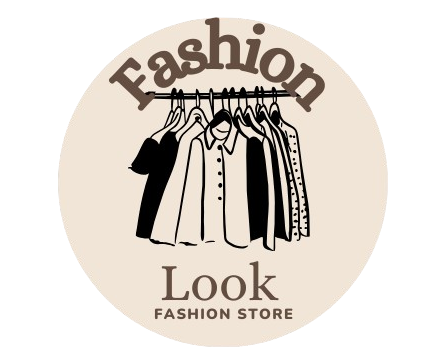
Table of Contents
ToggleMost of the Fashion Sales
In the ever-evolving world of fashion, understanding where the money goes can be as intriguing as the trends themselves. When considering “most of the fashion sales are spent on,” it’s essential to look beyond the surface and uncover the financial machinery driving the industry. From high-end runway shows to everyday retail experiences, the allocation of fashion sales revenue reveals a lot about how the industry operates and what drives its growth.
Where the Money Goes: Breaking Down Fashion Sales Expenditures
When examining “most of the fashion sales are spent on,” it’s crucial to break down the various areas where these revenues are channeled. Typically, a significant portion of fashion sales revenue is invested in production costs, including raw materials and labor. Additionally, marketing and advertising play a crucial role, ensuring that the brand reaches its target audience and creates a buzz around new collections. Another considerable expenditure is on the logistics of distributing the products from design studios to stores and online platforms.
Top Trends: Where Fashion Sales Dollars Are Spent
“Most of the fashion sales are spent on” emerging trends and innovation. Today’s fashion landscape is heavily influenced by trends that change rapidly. Brands allocate substantial funds to research and development, allowing them to stay ahead of the curve and create designs that captivate consumers. Sustainable fashion is a top trend, with many companies investing in eco-friendly materials and practices to appeal to the growing number of environmentally conscious shoppers.
From Runways to Retail: How Fashion Sales Revenue is Allocated
Fashion shows, from high-profile runways to local events, are a significant part of the industry’s spectacle. However, “most of the fashion sales are spent on” ensuring that these shows lead to commercial success. Revenue is often allocated to elaborate shows and marketing campaigns that generate hype. Post-show, the focus shifts to retail, where funds are spent on stocking stores, managing inventory, and enhancing the shopping experience both in physical locations and online.
Inside the Fashion Industry: The Major Expenses Behind Sales
To fully grasp “most of the fashion sales are spent on,” it’s important to delve into the industry’s major expenses. Besides production and marketing, substantial investments are made in maintaining brand image and reputation. This includes designer fees, licensing agreements, and collaboration costs with influencers or celebrities. Additionally, technology plays a key role, with investments in e-commerce platforms and digital marketing becoming increasingly vital.
Fashion Sales Unveiled: Major Spending Areas in the Industry
Unveiling the financial flow within the fashion industry reveals that “most of the fashion sales are spent on” areas that ensure the seamless operation of the business. This includes not only the costs associated with creating and selling fashion items but also the broader investments in brand development and customer engagement. Companies spend significantly on enhancing their online presence, optimizing supply chains, and ensuring a high-quality customer service experience.
The Spending Breakdown: What Fashion Sales Dollars Fund
When considering “most of the fashion sales are spent on,” a detailed spending breakdown highlights several key areas. A major portion goes into product development and manufacturing, including the costs of fabric, labor, and craftsmanship. Marketing and promotional activities, such as advertising campaigns and social media promotions, also receive significant funding. Additionally, fashion brands invest in retail infrastructure, both physical stores and online platforms, to reach and serve their customers effectively.
Behind the Scenes: How Fashion Sales Revenue is Utilized
Behind the scenes, “most of the fashion sales are spent on” a variety of critical functions that support the brand’s success. This includes investments in supply chain management to ensure timely production and delivery, as well as research into consumer preferences and market trends. Revenue is also allocated to maintaining the brand’s image through high-quality presentations and engaging marketing strategies, ensuring that every aspect of the customer experience aligns with the brand’s values and identity.
Fashion Finance: Where Sales Revenue is Invested and Spent
In the realm of fashion finance, “most of the fashion sales are spent on” strategic investments that drive growth and sustainability. Companies allocate funds to technological advancements, such as data analytics for understanding consumer behavior and enhancing operational efficiency. Additionally, significant resources are invested in sustainable practices, helping brands align with global movements towards environmental responsibility. This comprehensive approach to finance ensures that sales revenue supports not just immediate business needs but also long-term goals.
FAQs
- Where do fashion brands spend most of their sales revenue? Fashion brands spend most of their sales revenue on production costs, marketing, and distribution. Investments in research and development, technology, and maintaining brand image are also significant.
- How does the fashion industry allocate funds for marketing? Marketing funds in the fashion industry are allocated to advertising campaigns, influencer collaborations, social media promotions, and brand partnerships. These activities help in reaching target audiences and driving sales.
- What are the key areas of investment for sustainable fashion brands? Sustainable fashion brands invest in eco-friendly materials, ethical labor practices, and innovative production techniques. They also focus on creating a transparent supply chain and engaging in environmental initiatives.
- How do fashion companies manage their supply chain expenses? Fashion companies manage supply chain expenses by optimizing logistics, negotiating with suppliers, and investing in technology for better inventory management. Efficient supply chain management helps in reducing costs and improving delivery times.
- Why is investment in technology important for fashion brands? Investment in technology is crucial for fashion brands to enhance e-commerce platforms, utilize data analytics for consumer insights, and streamline operations. Technology also plays a key role in improving customer experiences and staying competitive in the market.


